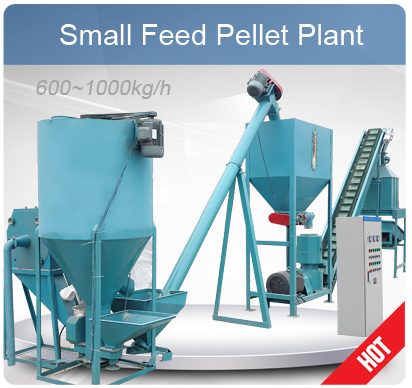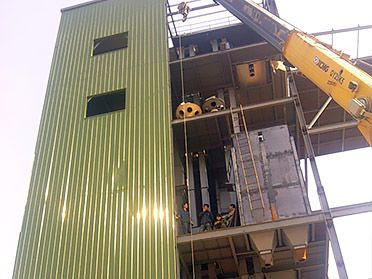Production Output: 60,000 ton/year (equal to 10 ton/hour)
Application: This feed mill can produce animal food for both poultry and livestock. It can be adapted to different feed formula.
Livestock & Poultry Feed Milling Machine Details
For the ones who are planning to start their own poultry feed milling business, this project is a good reference. (Smaller Project: 30,000 tons per year Poultry Feed Mill Plant )
Just send us an inquiry and tell us your feed materials, we can help you make the best customized feed processing plant with equipment list and price.
Processing Methd of Livestock & Poultry Feed
As a livestock or poultry farmer, what you feed your animals largely determines the quality and quantity of your produce. Animal feed can broadly be classified into roughages and concentrates. Most farmers prefer concentrates as they contain a high density of digestible essential nutrients. The methodology and procedure one follows while preparing their concentrate matter as it determines how good or bad the feed will be. This piece will provide you with the know-how on how to make the ideal concentrate.

Mash Feed Vs. Pellet Feed
- Moisturizing and Soaking
Just as it sounds, moisturizing involves hydrating the dry or dusty raw materials. This actively brings them together and makes them more compact. Soaking, on the other hand, involves immersing the hard components such as nuts in a bid to make them softer thereby improving their edibility. These processes together sometimes make certain components sweeter and less sour.
- Crushing
As you crush raw materials, you need to put into consideration the kind of animals you intend to feed. For instance, you cannot feed your cattle with the same grain size as your turkeys. Nevertheless, crushing is necessary as it improves digestibility. In addition, livestock can chew or swallow with much ease. Also, it helps to keep the animals off gastrointestinal complications.
- Steaming and Roasting
Nobody, not even animals hate a bit of added fragrance in what they consume. Roasting and steaming add a magical taste to the concentrate thereby making the animals love it more. Also, it increases the nutritional value of the concentrates and kills harmful toxins, keeping animals from certain diseases.
- Making Pellets
Research shows that livestock that feeds on pellets have a higher acceptance of their feed than those that do not. It also concludes that they eat more and are thereby much healthier. Pelletizing also enhances the digestibility while reducing the waste products. There is a recommended pellet size for every type of livestock. (Related Equipment: Ring Die Feed Pellet Equipment Unit )
- Microbial Fermentation
This process is essential as it greatly improves the nutritional value of the concentrate. Some of the nutrients that it adds include: Vitamin B, Essential Enzymes, Organic Acids.
All this culminates to your livestock getting healthier thereby increasing your produce. It is imperative to research largely if you want to domestically produce concentrates. Many farmers fail to include all the basics thereby limiting their production. If done with the right methodology, farmers enjoy much better produce. It is also a good idea to buy industry-produced concentrate as it is prepared wth top-notch expertise.

 Build Your Future!
Build Your Future!











